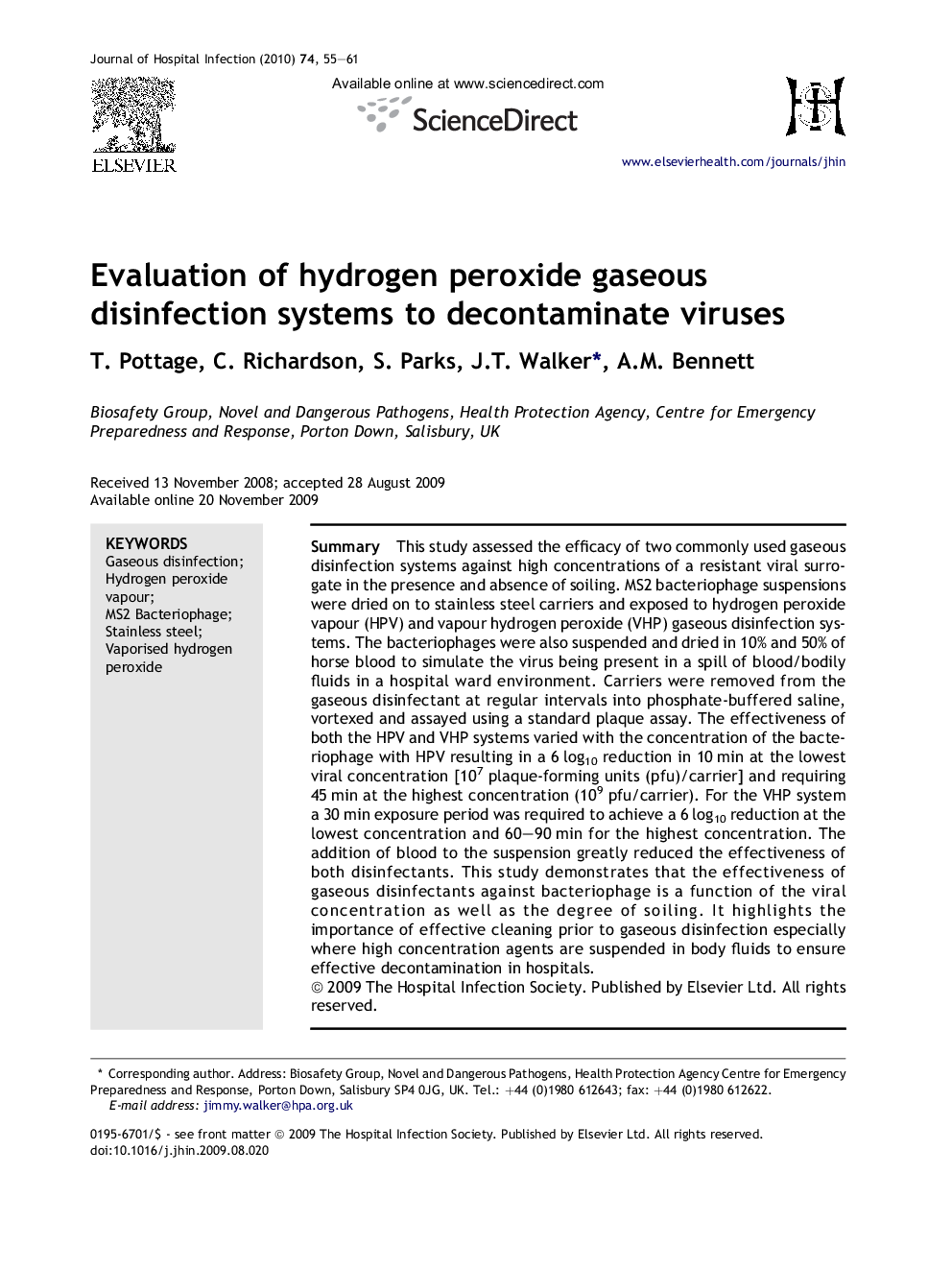| Article ID | Journal | Published Year | Pages | File Type |
|---|---|---|---|---|
| 3372913 | Journal of Hospital Infection | 2010 | 7 Pages |
SummaryThis study assessed the efficacy of two commonly used gaseous disinfection systems against high concentrations of a resistant viral surrogate in the presence and absence of soiling. MS2 bacteriophage suspensions were dried on to stainless steel carriers and exposed to hydrogen peroxide vapour (HPV) and vapour hydrogen peroxide (VHP) gaseous disinfection systems. The bacteriophages were also suspended and dried in 10% and 50% of horse blood to simulate the virus being present in a spill of blood/bodily fluids in a hospital ward environment. Carriers were removed from the gaseous disinfectant at regular intervals into phosphate-buffered saline, vortexed and assayed using a standard plaque assay. The effectiveness of both the HPV and VHP systems varied with the concentration of the bacteriophage with HPV resulting in a 6 log10 reduction in 10 min at the lowest viral concentration [107 plaque-forming units (pfu)/carrier] and requiring 45 min at the highest concentration (109 pfu/carrier). For the VHP system a 30 min exposure period was required to achieve a 6 log10 reduction at the lowest concentration and 60–90 min for the highest concentration. The addition of blood to the suspension greatly reduced the effectiveness of both disinfectants. This study demonstrates that the effectiveness of gaseous disinfectants against bacteriophage is a function of the viral concentration as well as the degree of soiling. It highlights the importance of effective cleaning prior to gaseous disinfection especially where high concentration agents are suspended in body fluids to ensure effective decontamination in hospitals.
